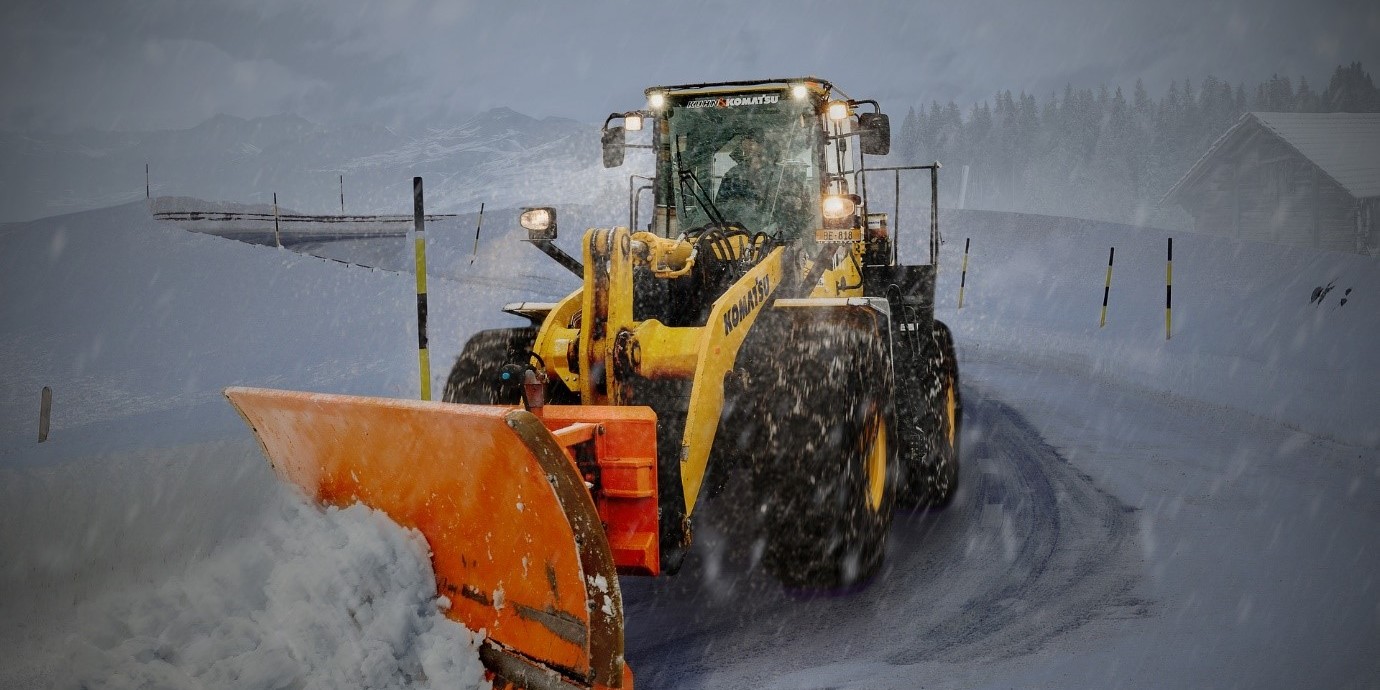How protect your workers from accidents and cold stress this winter
Posted on 5th December 2018 at 15:16
As the chill of winter takes hold, businesses up and down the country are bracing themselves for the treacherous conditions that can make outdoor work so difficult. Ice, snow, heavy rain, and short, dark days can all present serious hazards to employees in the construction industry, especially if your business isn’t adequately prepared. So, it’s essential that you have a plan in place to help keep your workers safe when out working in bad weather.
To help you get winter-ready, we’ll discuss the essential personal protective equipment (PPE) that businesses need to offer their employees during dangerous conditions, as well some tips for boosting staff morale during bad weather.
Provide warm clothing
Construction workers and those who spend a lot of time on-site are at more risk of cold stress, which can lead to a range of extremely dangerous illnesses and conditions, like frostbite and hypothermia. The only way to protect your workers is to ensure they have the correct protective clothing.
Multiple layers are warmer than one thick layer, as the air trapped between each layer acts as insulation. So, encourage employees to wear several base layers, and then offer them an insulated overcoat. This should be adequately waterproof, and not so bulky that it might limit their movement on the job. It should also feature reflective strips and other high-visibility features.
Head and face protection are also essential, especially during very bad weather. Bitterly cold conditions can tempt workers to switch their helmets for hats, which can leave them vulnerable to accidents and injuries, so offer them some clothing which works with their headgear. These helmet liners from Zoro fit neatly underneath standard issue hard hats, keeping workers both comfortable and safe.
Boots should also be waterproof, as wet feet will quickly become susceptible to cold stress, especially if staff will be working on sites with muddy ground or poor roads. Winter work boots should be large enough to accommodate either at least two pairs or thin socks, or one pair of thick ones, so it may be a good idea to order a size up.
Improve visibility
Low-light conditions are a perennial problem for the construction industry, especially in winter. So, you’ll need to have on-site work lights which are bright enough to ensure that workers can see what they’re doing during high-risk jobs. If your site is very sprawling, you may want to install mast-mounted lighting, which will illuminate a larger area more effectively. Any vehicles or mobile equipment should also be fitted with additional warning lights, as this will help to prevent collisions and encourage your workers to be aware of them as they move around the site.
It may also be a good idea to consider your working hours: could you start work earlier or finish later in order to make the most of daylight hours? Or can certain dangerous jobs be carried out during the lightest part of the day? Not only is this often a simpler solution, but your workers will be more alert at these times, too.
Minimise the risk of a fall
The Health and Safety at Work Act 1974 requires employers to take appropriate measures to help prevent slips and trips, both of which are more likely to occur during tough conditions. There are several ways to do this, the most important of which is to provide the right sort of footwear for both the weather and the work being performed.
Naturally, construction workers will need protective boots that protect their feet from falling debris or other hazards, but they should also be warm enough to spend a full working day outdoors. For very icy conditions, winter boot attachments — which provide added traction and grip on the sole — may be a good idea.
While the right footwear is a good start, you’ll also need to treat walkways, roads, pathways, loading areas, and access points with grit to stop them from freezing over. Hand rails and guardrails are a must on all raised areas and ramps where a fall from height is a possibility.
Boost morale with good facilities
As any good HR manager will tell you, promoting employee safety isn’t just about their physical health: their mental wellbeing matters, too. Having a warm employee breakroom where they can rest, socialise, and grab a hot drink can make a big difference to staff morale, especially during freezing winter weather. So, if you haven’t already, now is a great time to review your employee breakroom and other facilities and make sure they’re fully equipped for the months ahead.
Your staff breakroom should provide adequate shelter from the worst that the British weather can throw at you, and there should be adequate heating: you may want to consider space heaters if you usually work on site. It’s also a good idea to consult your staff on whether there’s anything else they’d like to have in their break room (within reason, of course!).
No-one relishes the prospect of the long dark winter ahead, least of all those who work in construction. But, as long as you create a plan to protect your staff, provide workers with PPE that’s appropriate for the weather, and take measures to boost morale, you should be able to make sure it doesn’t have a disproportionate effect on your business.
This content will only be shown when viewing the full post. Click on this text to edit it.
Share this post:






